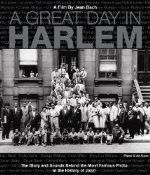
The death of a film documentarian this week calls for a look at a famous photograph she chronicled – one of the most iconic music photos of the 20th Century – after the jump …..
In 1958, modern jazz was approaching the zenith of its popularity. The British Invasion of 1964 would (in due course) change that situation but for now: Charles Mingus, Miles Davis, Dave Brubeck and others were taking the music that came out of New Orleans and was honed by Louis Armstrong and Duke Ellington … and creating new sounds.
And so Esquire Magazine commissioned the photographer Art Kane to capture as many of the greats that they could entice during an August morning in front of East 126th Street, between 5th and Madison Avenue. This may be an apocryphal story: but these musicians who were used to playing nights and after hours were now outside at an unfamiliar time. (“A musician at the shoot,” wrote The New Yorker’s Whitney Balliett, “said he was astonished to discover that there were two 10 o’clocks in each day.”) Less surprising was this comment by the trumpeter Dizzy Gillespie:
“When I found out there was going to be this big meeting for a picture in Esquire,” Dizzy Gillespie recalled, “I said to myself, ‘Here’s my chance to see all these musicians without going to a funeral.'”
Still, this was not an event planned months in advance: and so there were many iconic musicians who were on the road or otherwise unavailable. Thus: Duke Ellington, Louis Armstrong, Miles Davis, Benny Goodman, Dave Brubeck, Billie Holiday and many others are not in the photo.
There were, however, legions of famous players who were there. Besides Dizzy (sticking his tongue out at Roy Eldridge on the far right-hand side below) there were Gene Krupa, Lester Young, Coleman Hawkins, Thelonious Monk, Jimmy Rushing, Charles Mingus, Milt Hinton and Count Basie (sitting on the curb, lower right). There were other younger players who had yet to make their mark, but soon would: Horace Silver, Sonny Rollins and Hank Jones (who had two famous brothers in Thad Jones and Elvin Jones). Here is that famous photo (and at this link is a website with an identifying key to the figures in the photo):
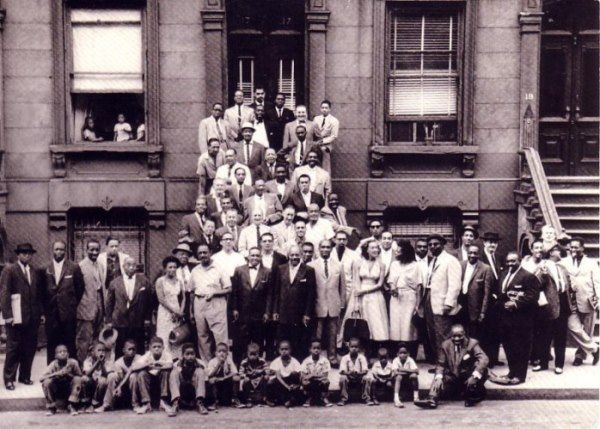
Thirty-seven years later (in 1994), a woman named Jean Bach put together a documentary on the taking of this iconic photograph …. and with the help of the surviving members of that day’s shoot (including the help of bassist Milt Hinton – whose wife brought along his home movie camera along that day, with invaluable background material) her documentary A Great Day in Harlem was nominated for an Academy Award in 1995. Sadly, photographer Art Kane committed suicide in February, 1995.
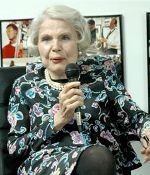

With the new-found interest in the original photo, a revived Life Magazine decided to commission the photographer Gordon Parks to arrange a reunion of the surviving members that same year of 1995. Of the original 57 adults, twelve were still alive … and ten of them reassembled in front of that same brownstone (Ernie Wilkins and Sonny Rollins were both on tour at the time) in more-or-less the same spot they were years earlier.
Left to right in this photo are: Hank Jones, Eddie Locke and Horace Silver …. on the top steps are: Benny Golson, Art Farmer, Chubby Jackson and Johnny Griffin …. and on the right are Marian McPartland, Milt Hinton and Gerry Mulligan. (Seated is Taft Jordan, Jr. – the child seated next to Count Basie in the original photo, whose late father Taft Sr. had been one of the 57 musicians in the original).
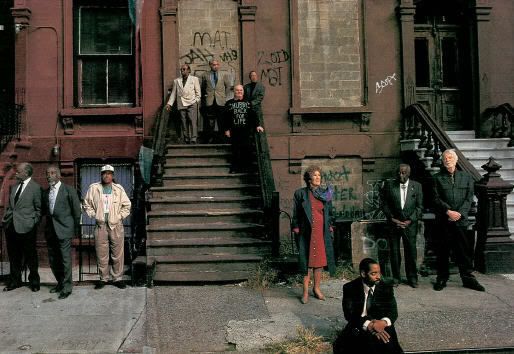
The day after that photo, Life invited eighty jazz artists to pose for a new Great Day shot. One hundred and fifty-six musicians showed up (including all ten who appeared in the “Survivors” photo) plus many others (the circle shows Marian McPartland and Dave Brubeck). Photographer Joe McNally took this photo, and in an essay for the magazine entitled ‘Another Great Day For Jazz’, Daniel Okrent wrote that “Never had so much talent been gathered in a single room, their faces expressing variations on the original theme – new notes, improvisations, tangents off the uniquely American melody of jazz”. No identifying key, but one example is Lionel Hampton in the double-breasted jacket, first row.
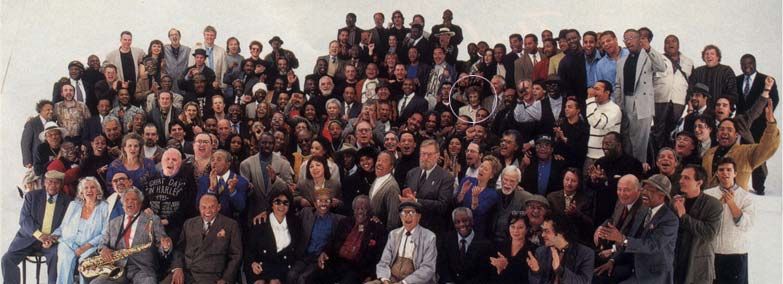
Sadly, film documentarian Jean Bach died just the other day at the age of 94. And mortality is the watchword for the original photo, as just four survivors remain from the original 57.
Two are saxophonists: Benny Golson (age 84, photo left) is still performing – in Michigan this weekend – and has written such modern jazz standards as “Killer Joe”, “I Remember Clifford (Brown)”, and a tune that Art Blakey made famous, the “Blues March”. Sonny Rollins (age 82, photo right – receiving the National Medal of the Arts from President Obama) is widely considered to be one of the most important tenor saxophonists of all time, and has classics such as “Oleo”, “Doxy” and his signature tune “St. Thomas” which he regularly performs on tour. At age 27, he was the youngest adult in the original photo.

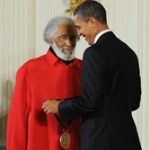
The other two are pianists: the British-born Marian McPartland (age 95, photo left) was for many years a radio host of the syndicated interview/performing show Piano Jazz on NPR. And Horace Silver (age 84, photo right) has long been a bandleader and composer in his own right, though retired from performing due to health reasons.
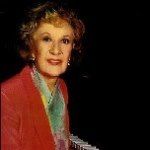
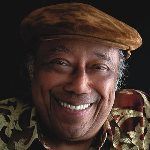
Let’s close with Horace Silver’s most famous tune, written in 1964 for his Cape Verdean-born father. With Father’s Day on the horizon, you will hear Song for My Father on a radio station near you at that time. And if the opening riff reminds you of something else: well, ten years later it was used prominently in the song Rikki Don’t Lose That Number by Steely Dan.
4 comments